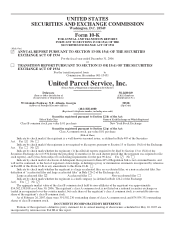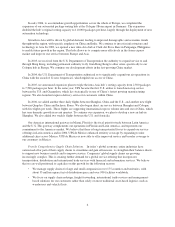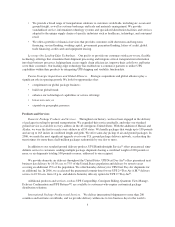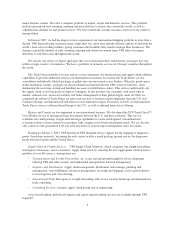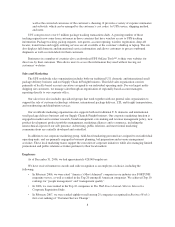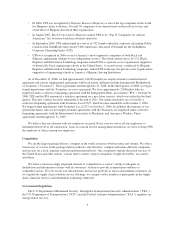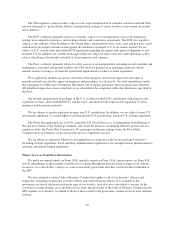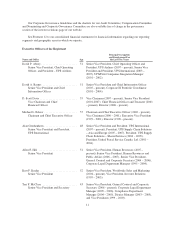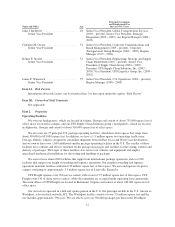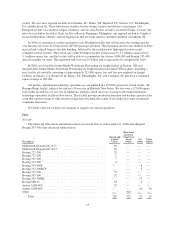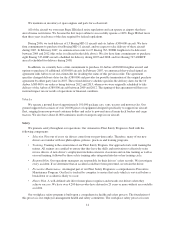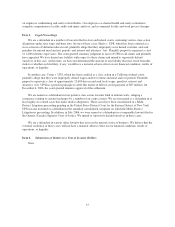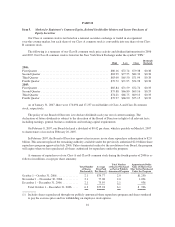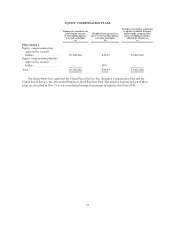UPS 2006 Annual Report Download - page 24
Download and view the complete annual report
Please find page 24 of the 2006 UPS annual report below. You can navigate through the pages in the report by either clicking on the pages listed below, or by using the keyword search tool below to find specific information within the annual report.• In 2006, UPS was recognized by Hispanic Business Magazine as one of the top companies in the world
for Hispanics in the workforce. Overall, 50 companies were chosen based on their efforts to hire and
retain those of Hispanic descent in their organization.
• In August 2005, Black Professionals Magazine named UPS to its “Top 25 Companies for African
Americans” list, based on workforce diversity initiatives.
• In September 2006, UPS ranked ninth in a survey of 152 brands ranked for corporate citizenship. Public
relations firm GolinHarris interviewed 5,000 Americans, who rated 152 brands for the GolinHarris
Corporate Citizenship Index (CCI).
• UPS was recognized in 2006 as one of America’s most supportive companies of both black and
Hispanic engineering students by two independent surveys. The fourth annual survey by U.S. Black
Engineer and Information Technology magazine named UPS as a private sector organization supportive
of historically black engineering schools in the United States. A second survey, conducted by Hispanic
Engineer and Information Technology magazine, ranked UPS in the top five private sector organizations
supportive of engineering schools at America’s Hispanic Serving Institutions.
As of December 31, 2006, we had approximately 246,000 employees employed under a national master
agreement and various supplemental agreements with local unions affiliated with the International Brotherhood
of Teamsters (“Teamsters”). These agreements run through July 31, 2008. In the third quarter of 2006, we began
formal negotiations with the Teamsters on a new agreement. We have approximately 2,800 pilots who are
employed under a collective bargaining agreement with the Independent Pilots Association (“IPA”). On June 30,
2006, UPS and the IPA announced a tentative agreement on a new labor contract, which was ratified in the third
quarter. This new contract becomes amendable at the end of 2011. Our airline mechanics are covered by a
collective bargaining agreement with Teamsters Local 2727, which became amendable on November 1, 2006.
We began formal negotiations with Teamsters Local 2727 on October 2, 2006. In addition, the majority of our
ground mechanics who are not employed under agreements with the Teamsters are employed under collective
bargaining agreements with the International Association of Machinists and Aerospace Workers. These
agreements run through July 31, 2009.
We believe that our relations with our employees are good. Every year we survey all our employees to
determine their level of job satisfaction. Areas of concern receive management attention as we strive to keep UPS
the employer of choice among our employees.
Competition
We are the largest package delivery company in the world, in terms of both revenue and volume. We offer a
broad array of services in the package delivery industry and, therefore, compete with many different companies
and services on a local, regional, national and international basis. Our competitors include the postal services of
the United States and other nations, various motor carriers, express companies, freight forwarders, air couriers
and others.
We believe one increasingly important element of competition is a carrier’s ability to integrate its
distribution and information systems with its customers’ systems to provide transportation solutions at
competitive prices. We rely on our vast infrastructure and service portfolio to attract and maintain customers. As
we expand our supply chain solutions service offerings, we compete with a number of participants in the supply
chain, financial services and information technology industries.
Government Regulation
The U.S. Department of Homeland Security, through the Transportation Security Administration (“TSA”),
the U.S. Department of Transportation (“DOT”) and the Federal Aviation Administration (“FAA”), regulates air
transportation services.
9



